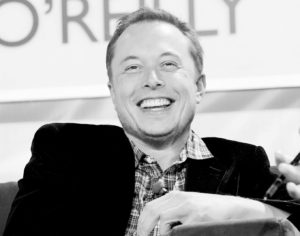By Roy Morrison
A global renewable energy transformation is underway. The proposed merger between Tesla and Solar City outlines the shape of things to come.
The integration of solar panels with battery storage and electric vehicles is the paradigm for both ecological global economic growth, and reaching the goals of the Paris Climate accord.
An integrated renewable energy company will combine electric vehicles, battery storage, and solar electric panels, all with rapidly expanding market share and plunging prices. Globally, investment in cheap and carbon-free solar energy is rapidly supplanting fossil fuels.
Whether or not Tesla’s corporate reorganization proceeds, this is the model for a global renewable energy company with a comprehensive and compatible product line.
Elon Musk of Tesla understands that the combination of increasingly cheaper solar panels with rapidly developing and affordable battery storage makes 100% renewable energy systems achievable globally.
Mega battery and photovoltaic factories, being constructed by Tesla and others like Faraday Future in the United States, India, China, and Ghana, mean that global industrial productive might is being rapidly deployed for a renewable energy transformation.
Benchmark Mineral Intelligence estimates that at least twelve lithium-ion mega-factories will come online by 2020, seven of them in China. Sony is pushing forward with sulfur-lithium battery development. China passed the United States in yearly production of electric vehicles by the start of 2016, producing 250,000 a year, compared to 180,000 for the United States. China is now also a global leader in lithium battery anode production. The French oil giant Total has bought the lithium battery company SAFT for $950 million, as big oil is beginning to see where the sun is shining. Even the Saudis are now planning for major solar development as oil revenues collapse.
The more renewables that are built, the lower the cost, the less pollution, the more good jobs are created. California and its utilities and regulators are a good example of how we are moving rapidly toward a renewable turn. California utilities like PG&E and Southern California Edison have seen the future, and it’s renewable. They’re making major investments in electric vehicle charging stations at the same time the state, led by Gov. Jerry Brown, mandates the phase-in of more renewable power. The utilities understand that the renewable future means more, not fewer, electric sales.
And it’s companies like Tesla, Faraday Future, China’s BYD, and Mercedes that aim to provide the vehicles to take advantage of this electricity and charging stations. And the batteries on these electric cars can also plug into the grid and your house to help provide supplemental power.
California’s system uses a renewable auction mechanism with competitive bids to help finance renewables, employing market forces to help keep pushing the cost of renewables down.
 Wall Street investment in renewable energy is now far greater than in fossil fuels. Peabody Coal was bankrupt on the same day the merger of Solar City and Tesla was proposed, and PG&E announced the planned shutdown of Diablo Canyon, California’s last nuclear plant.
Wall Street investment in renewable energy is now far greater than in fossil fuels. Peabody Coal was bankrupt on the same day the merger of Solar City and Tesla was proposed, and PG&E announced the planned shutdown of Diablo Canyon, California’s last nuclear plant.
The sun is rising. Politicians and regulators need to assist our renewable entrepreneurs, workers and their unions, and communities hungry for clean sustainable jobs. We are witnessing the dawn of global ecological economic growth.
Roy Morrison’s latest book, Sustainability Sutra will be published by Select Books in NY in March 2017. He is working on solar farm development with Greater Boston Capital Partners. You can reach him at roy.morrison114@ecocivilization.info.









Leave a Reply